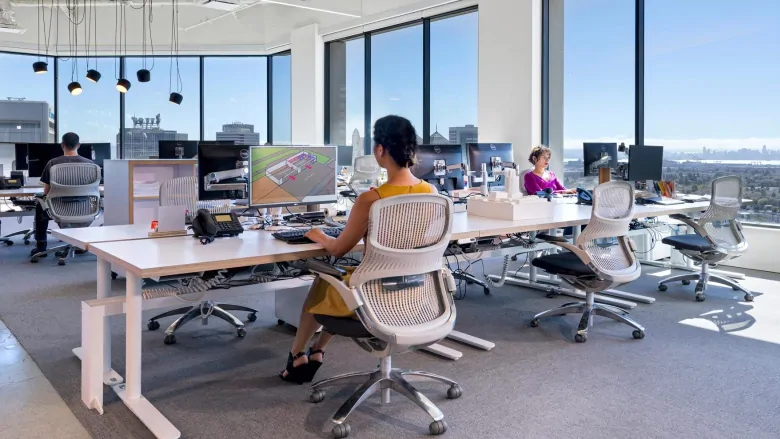As Canadian employers look ahead to the end of the COVID-19 lockdown and a return of office staff, plans are being made for a wide range of new safety protocols. Some of the policies could improve office life, but most will be tedious and aggravating.

Workers looking forward to their return to the office and a sense of normalcy should brace themselves for a wide range of new safety protocols.
The post-pandemic workplace could include greater distance between desks, mandatory masks, shift work and lineups to take crowd-free elevators or get a temperature check, according to people who design and lay out offices for a living.
Advisers at Canadian commercial real estate and architecture firms have issued guidelines to clients on how to prepare for their employees’ return to Canadian workspaces once it’s deemed appropriate. They say many changes will be required.
Spoiler alert: It’s not going to be fun. And it’s not going to be fast.
“It will be a very slow, graduated return to work with employees that are critical to the business,” says Lisa Fulford, a senior vice-president with commercial real estate giant CBRE, based in Toronto. “A lot of the social areas that we use when we’re at work — break spaces, lunchrooms, food courts, cafés — many of those will be coming back slowly, as well.”
More personal space
Once staff arrive, there will have to be more breathing room. Seating plans should be modified in order to physically distance workers, say advisers.
That will reverse a decades-long trend. Companies in high-rent downtown cores across Canada have been cramming workers into closer proximity to each other for years. Open-plan offices with small workstations and few private offices can save space and reduce real estate costs. In some workplaces, dividers between cubicles have been abandoned, as well, to encourage teamwork and collaboration.

But studies done even before the pandemic have shown that employees working in shared or ope

